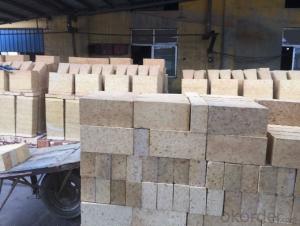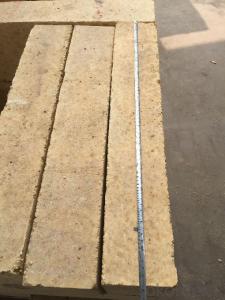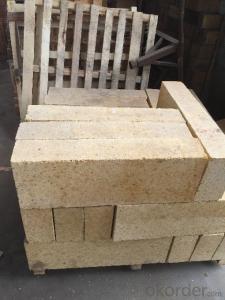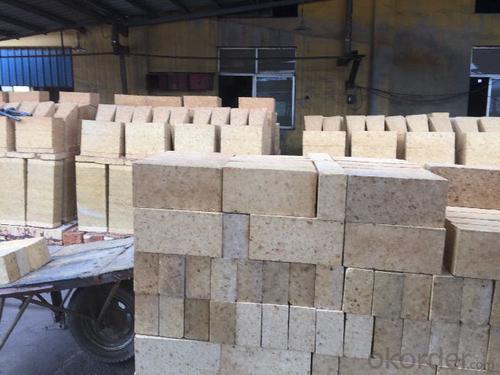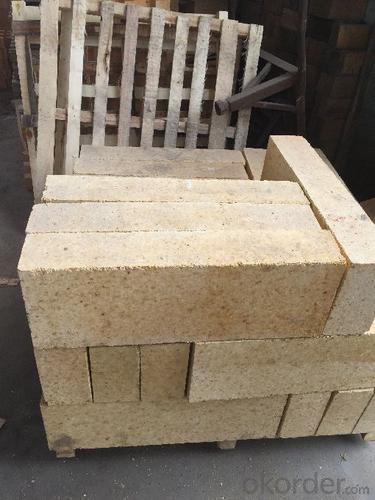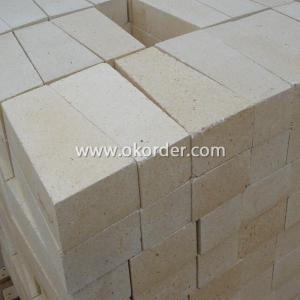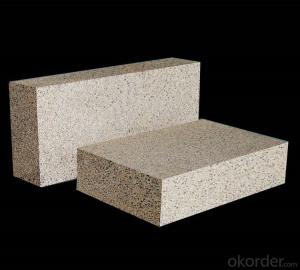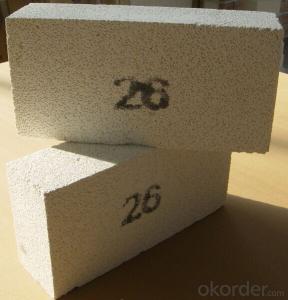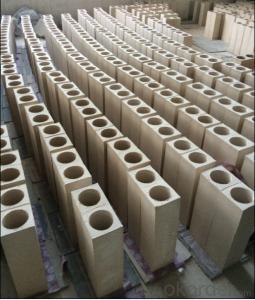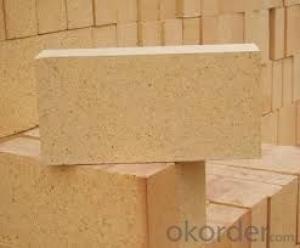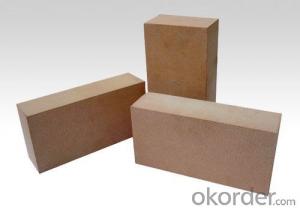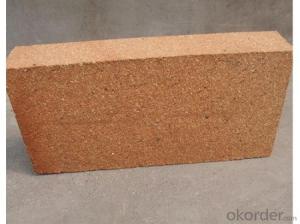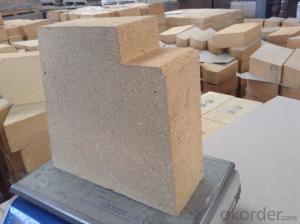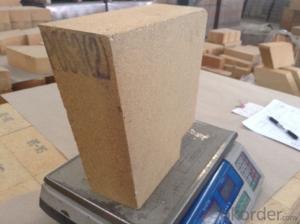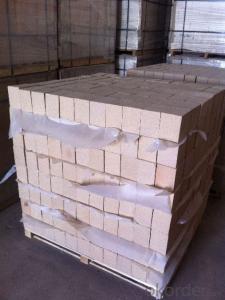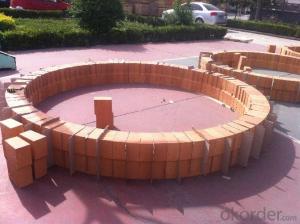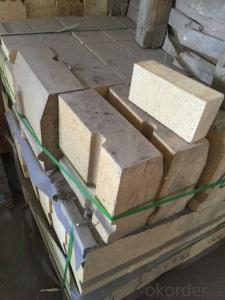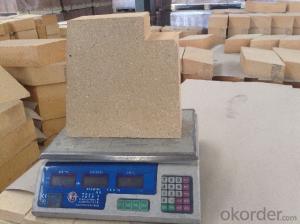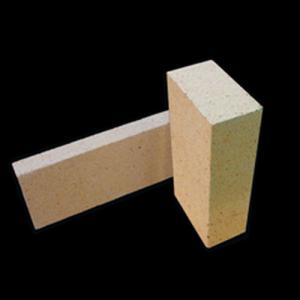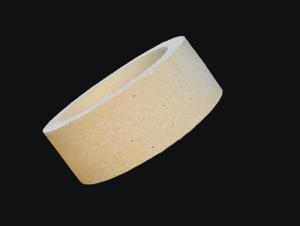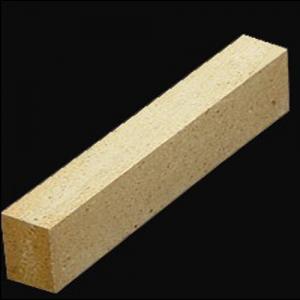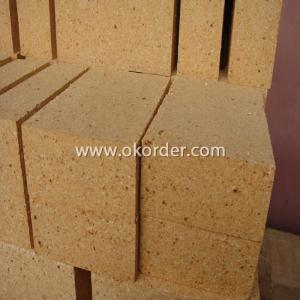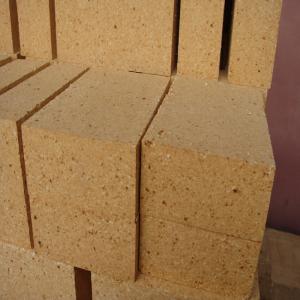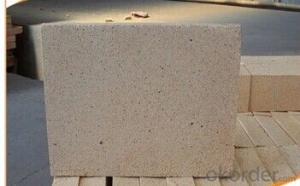Fireclay Brick with 42% Al2O3 Content
- Loading Port:
- Qingdao
- Payment Terms:
- TT OR LC
- Min Order Qty:
- 17 m.t
- Supply Capability:
- 10000 m.t/month
OKorder Service Pledge
OKorder Financial Service
You Might Also Like
General Information
CMAX high alumina firebricks are classified according to alumina content ranging from 48% to 90%.
Feature
Low thermal conductivity
Excellent acid and base slagging resistance
High refractoriness
Excellent thermal shock resistance
Excellent mechanical strength
Application
CMAX high alumina bricks are commonly used in blast furnace, hot blast furnace, the roof of electric furnace, teeming ladle, rotary kiln, regenerator, etc
ITEM | UAL48 | UAL55 | UAL65 | UAL75 | UAL80 | UAL85 | ALP80 |
Refractoriness, ℃ | 1750 | 1770 | 1790 | 1790 | 1810 | 1810 | 1810 |
Apparent Porosity,% | 22 | 22 | 23 | 23 | 20 | 20 | 18 |
C.C.S, Mpa | 39 | 44 | 49 | 53 | 55 | 60 | 100 |
Refractories Under Load (0.2Mpa),℃ | 1420 | 1470 | 1500 | 1520 | 1500 | 1520 | 1550 |
Reheating Linear Change,% | 1450℃x2h 0.1~-0.4 | 1500℃x2h 0.1~-0.4 | 1500℃x2h 0.1~-0.4 | 1500℃x2h 0.1~-0.4 | 1550℃x2h -0.5~+0.5 | 1550℃x2h -0.5~+0.5 | 1550℃x2h -0.5~+0.5 |
Al2O3 Content , % | 48 | 55 | 65 | 75 | 80 | 85 | 82 |
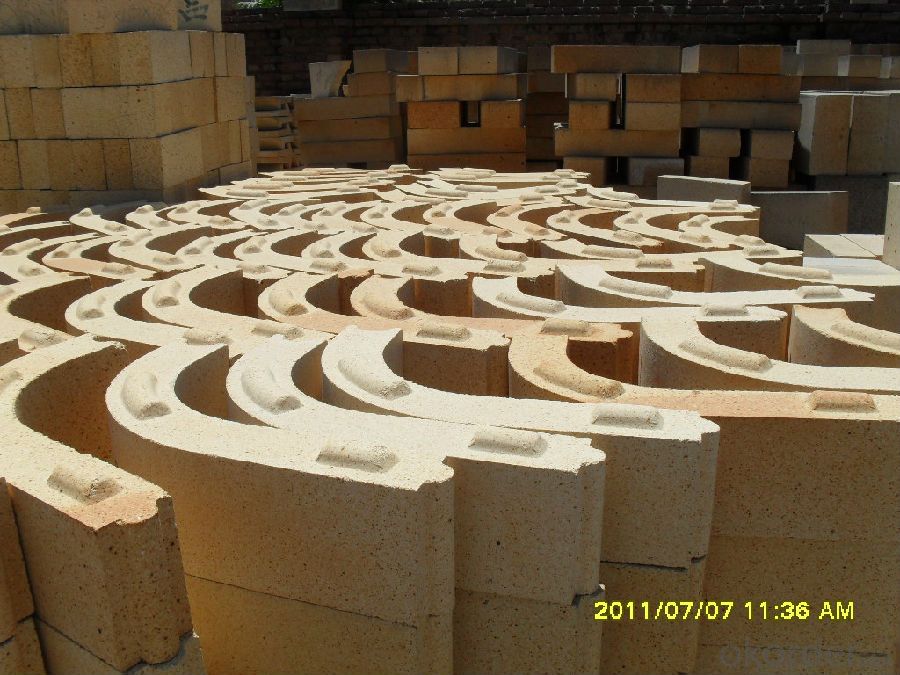
- Q: Do you use ceramic as offal material for refractory bricks?
- Use special clinker of bauxite with high alumina as main ingredient, pulp, K2O < 0, the main component is Al2O3 which is more than 18%, it is a kind of neutral refractory material, pyrophyllite fine powder doesn't need refractory brick production process, Fe2O3 < 1, grinding - mixing - molding - sintering - packaging - delivery. A.3%.3%, Fe2O3 < 0, molding and calcined from bauxite or other raw materials with high content oxides, combined with clay, K2O < 0.5%; 3: 2, raw materials 1; 4: 325 mesh.0%:
- Q: The advantages of using alkalinty refractory brick?
- Magnesia chrome and other spinel refractories alkalinity refractories; (2) the alkalescent chrome magnesite refractories, alkaline solvent resistance is strong, usually refers to the magnesia refractory material, dolomite brick and calcareous refractory materials, dolomite refractory materials and lime refractory materials, acid flux or acid refractory chemical reaction. Mainly used in alkaline steel furnace and non-ferrous smelting furnace. Alkaline refractory material at high temperature for alkaline slag. Mainly as the following categories, but the acid slag, forsterite refractories and magnalium: (1)strongly alkaline magnesia brick, magnesia carbon brick and cement kiln
- Q: Refractory brick, high alumina brick, magnesia chrome brick, magnesia brick, clay brick, which type of brick has the highest refractory temperature?
- It depends. if high alumina brick is used in kiln, its temperature is above 1700 degree, clay brick is between 1500 degree to 1750 degree, magnesia bricks and magnesia-chrome bricks are about 1500 degree to 1650 degree.
- Q: Why can't build refractory brick behind the skew block?
- Refractory is heat expansion and cold contraction, when it is high temperature, it will squeeze toward the center and the vault will be deformation .
- Q: What is the size of mechanism brick and general refractory brick?
- The ordinary refractory brick is 230mm long, 53mm thick; red brick is 240mm long, 115mm wide, 65mm thick,
- Q: What are the properties of clay bricks?
- The clay brick refractoriness in above 1600 degrees, but the beginning of softening temperature is very low, as long as 1250 to 1300 DEG C, and softening start temperature and end temperature (fflJ40% deformation temperature) of large distance, this distance is about 200 ~ 250 DEG C.
- Q: What is the difference between fused brick and clay brick?
- Clay brick materials, cheap, durable, and fire prevention, heat insulation, sound insulation, moisture absorption and other advantages, is widely used in civil engineering. Waste brick can also be used as aggregate of concrete. In order to improve the shortcomings of ordinary clay bricks, such as small, self important and waste of soil, they are developing in the direction of light weight, high strength, hollow and big blocks. In a proper ratio of lime sand brick and quartz sand, sand or fine sand, the ground, Kazumi Wa, semi dry pressing and autoclaved curing and. The fly ash brick is made of fly ash as main raw material and mixed with cement material such as coal gangue, stone powder or clay. It is made up of batching, molding, drying and roasting. It can make full use of industrial waste residue and save fuel.
- Q: Why are clay bricks used when buildings are below zero? Frost heaving, water absorption, or something?
- The clay brick has a certain strength, and has better heat insulation and sound insulation performance, and the interior wall of the winter can not appear condensation phenomenon, and the price is low. Although a variety of new wall materials are emerging, clay bricks will still be used as a main material for masonry work in the future
- Q: Why do some people say that clay brick insulation effect is good, and some people say that bad, in the end what is right?
- The heat preservation effect should be taken away from the heat insulation capacity of the material. The ordinary clay brick has small heat capacity and slow heat conduction, so it is more thermal insulation.
- Q: Can refractory bricks be used to build a house?
- Refractory brick can be used to build houses, but you can not use ordinary cement to build, the cost is 3 times than that of ordinary brick.
Send your message to us
Fireclay Brick with 42% Al2O3 Content
- Loading Port:
- Qingdao
- Payment Terms:
- TT OR LC
- Min Order Qty:
- 17 m.t
- Supply Capability:
- 10000 m.t/month
OKorder Service Pledge
OKorder Financial Service
Similar products
Hot products
Hot Searches
Related keywords
